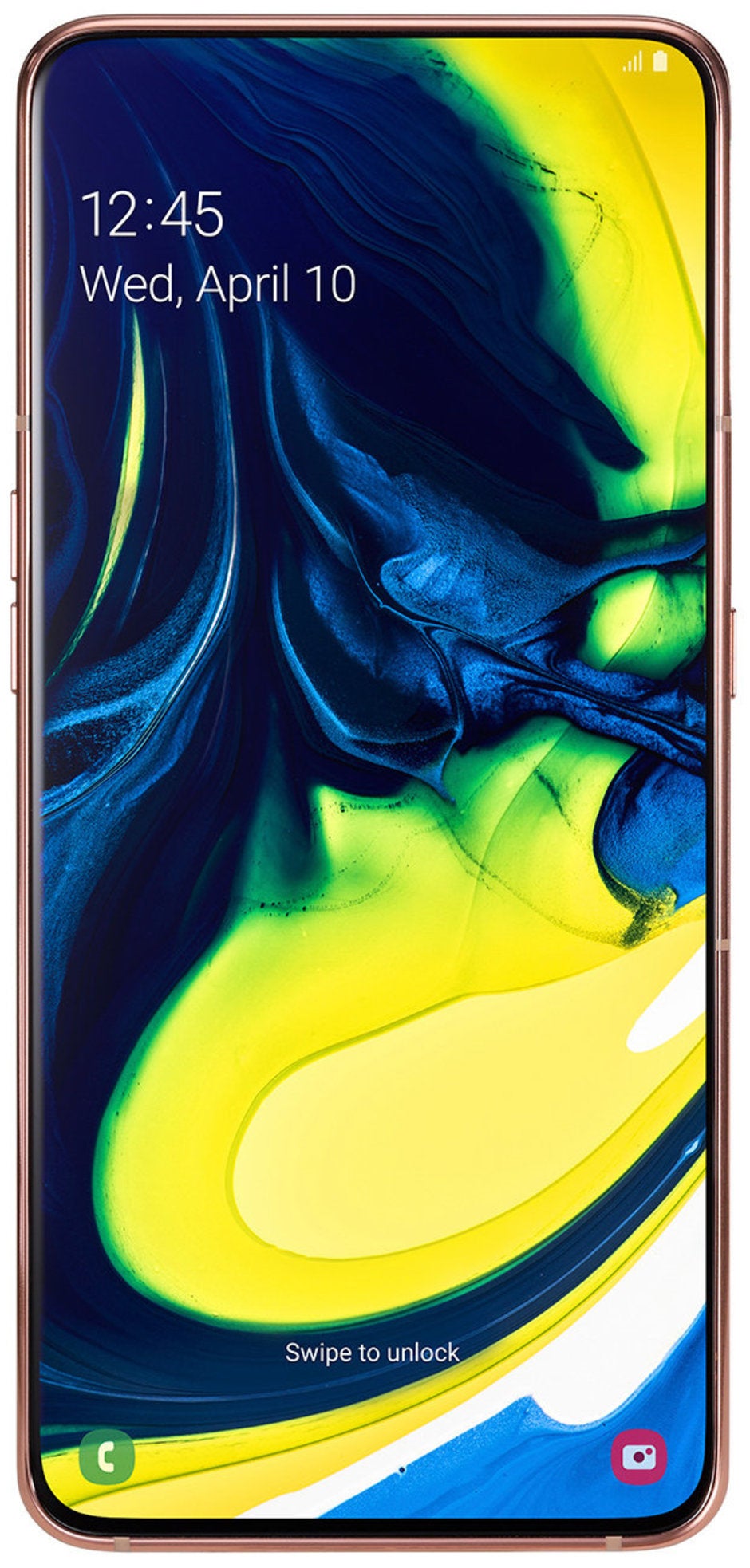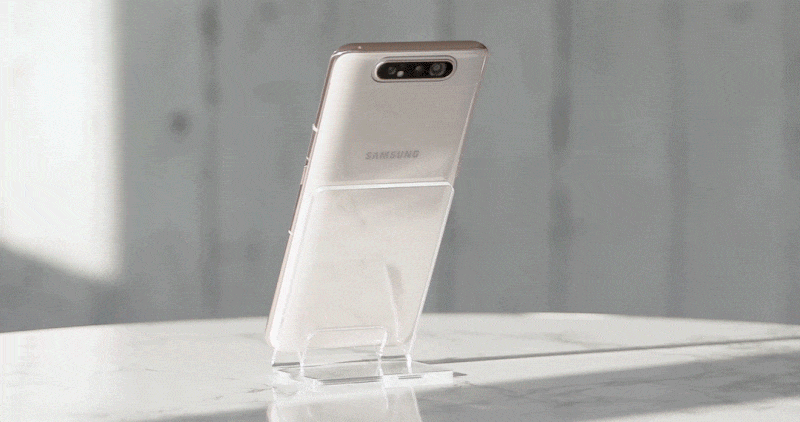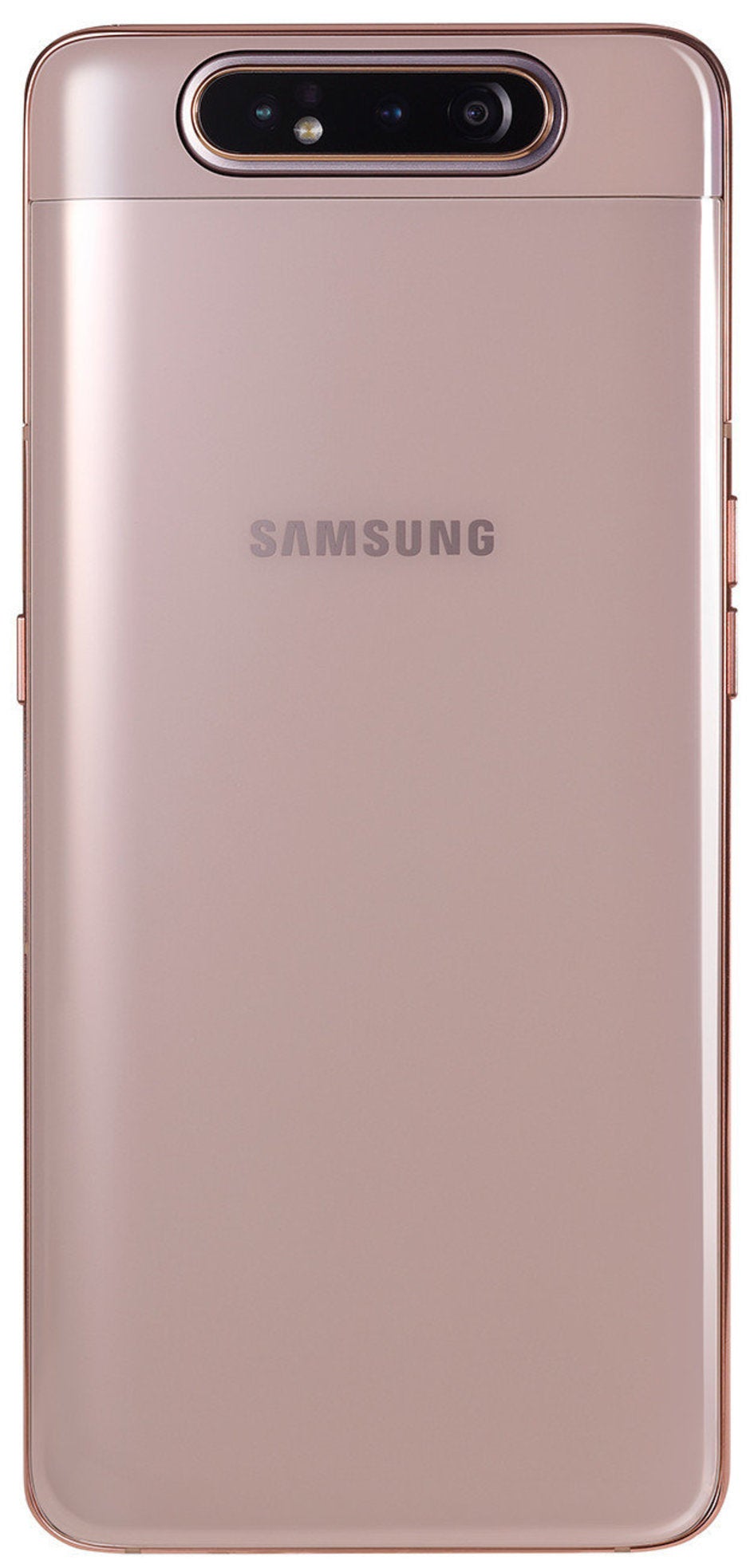Samsung pops out the 'New Infinity' Galaxy A80 and pops up its rotating tri-camera

Samsung's DJ Koh went on record recently, saying that he will try to mix it up in the midrange side of things and will introduce flagship features there to better differentiate the A-series and below. It was not explicitly said, but with that move, he aims to stave off the onslaught of Chinese brands that are decimating everyone's midrange and encroaching on the high-end turf with value-for-money propositions.
One needs to look no further than the newly-announced Galaxy A80 to gauge that DJ Koh wasn't kidding when he said that the lines between Samsung's flagships and midrangers will get increasingly blurry. Not only does the phone have an in-display fingerprint reader, glass body, generous RAM/storage amounts, and a huge battery, but it also adds a triple camera system with 3D depth-sensing - you know, S10 5G-style.
To top it all off, the Galaxy A80 sports a unique sliding camera mechanism that has so far been the prerogative of the Chinese juggernauts Oppo and Vivo yet Samsung added its own cool twist to it literally. Here's the full scoop on the unique for Samsung Galaxy A80 that was just unveiled at three global events.
Galaxy A80 design and display
The first New Infinity design

We know what you are most interested in - how is this new type of "all-screen," "bezel-less" Samsung phone design called? Why, New Infinity Display, of course, that's the only one left from the quartet of Infinity design approaches Samsung revealed last year. Indeed, neither the shrunk top and bottom bezels of the S8 that started it all, nor the waterdrop notches or hole-in-display Infinity-V or -O designs are fit to explain this one.
Granted, we still have quite a large handset at 6.50 x 3.01 x 0.35 inches (165 x 76.5 x 9 mm ) but considering that the screen is 6.7 inches across, the size is rather compact for the diagonal, and that's the whole point of the rotating tri-camera mechanism on the back.
The bezels seem uniformly thin throughout, save for the slightly wider chin at the bottom where the display connector is usually located. Samsung managed the slimming of the top bezel by removing anything from up there, even the earpiece, and the A80 is now sporting its Sound on Display technology that vibrates the screen to emit audio. The "3D Glass" body lies on a metal frame, exuding a premium look and feel, so the only thing left to wonder about is what will the official case for the A80 look like.
The Galaxy A80's amazing pop-up, rotating tri-camera
Rear cam selfies come true and effortless
Some use an extra screen on the back in order to take selfies with the best camera set you have in your phone - the rear one - and some, like Samsung with the A80, simply rotate the back shooters towards you when you tap the selfie button. The whole process is quick, seamless and automated as you can see below, no pushing up or manual flipping:

Pop, flip, take your best selfie ever
The rear camera setup is to be trusted, too. Samsung placed Sony's new 48MP pixel-binning juggernaut in there as the main sensor and chose to accompany it with an 8MP wide-angle sidekick for those landscape and group shots.

There's one more thing about the Galaxy A80's camera, though, and that is a 3D depth-sensing ToF camera that will probably come in handy not only for unlocking but also for 3D-mapping the object to deliver that perfect bokeh or portrait mode shot. Samsung brought down all the features from the S10 line, too, like the excellent Super Steady video mode that will keep your live footage from any shakes and jitters - the A80 is dubbed as the "Era of Live," after all.
The time-of-flight camera offers Live Focus in video mode, too, so you can map the depth of objects caught in the footage while filming it. You get the same 30 scene recognition and optimization scenarios that the S10 has, too, which Samsung is very careful not to call AI. It saved the AI moniker for the next part, the hardware and software performance.
Galaxy A80 specs
Here's where AI enters the stage
As a true upper midranger, the Galaxy A80 offers a generous amount of operating memory and storage. This time around, however, Samsung went all in, equipping the phone with no less than 8GB of RAM (the Galaxy S9 has 4GB) and 128 GB of internal memory. The octa-core Snapdragon 730 processor that runs the show is set in a 2.2GHz Dual + 1.8GHz Hexa-core configuration.
In short, the A80 is specc'd way above its midrange positioning, and when you add a sufficiently large 3700 mAh battery that can be topped up very quickly with the fast 25W charger in the box, the picture only gets rosier. Samsung reveals that an "Intelligent Performance Enhancer provides AI-powered performance optimization software" in the A80. From the looks of it, it learns and adapts to your usage scenarios and power draw to deliver smooth performance with the least toll on battery life - something that most every major manufacturer now claims to do. A Bixby button with Bixby Routines helps you schedule and optimize your everyday life with the phone further.
Galaxy A80 price, colors and release date
Available in Angel Gold, Ghost White, and Phantom Black, the Galaxy A80 will be landing on May 29th in many a market around the globe. Samsung is yet to set a firm price range for each country but we'd wager to guess it will sit a step above the Galaxy A70's $500, so 600 EUR/USD and up is your best bet for this unique rotating tri-camera phone from Samsung.
Don’t let the background get in the way of your story, even in video. #GalaxyA80 #SamsungEvent
— Samsung Mobile (@SamsungMobile) April 10, 2019
Learn more: https://t.co/bbVzsoWlIW pic.twitter.com/za4U3sUKmN
The Gold and White models actually have a bit of pink and blue in them, respectively, depending on how the light angle goes, so the chameleon glass body is poised to remain interesting to look at for a long time. Now, what would the case of this thing look like again?
Follow us on Google News












Things that are NOT allowed:
To help keep our community safe and free from spam, we apply temporary limits to newly created accounts: